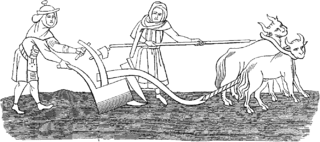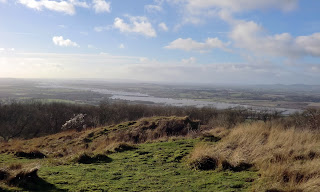Today is another long travel day, planned duration of travel: 9:56 , Changes 2.
The first train of the day (TLK10011) is scheduled to leave Warszawa Centralna at 07:22. I arrive at the station by 07:00 to allow plenty of time to find my platform. The board shows an on time departure from Platform 2 so down I go. Platform 2 (and all the other platforms) have two tracks, which one will be mine? The overhead signs show the train details just before arrival and all the trains have their number on the front a side of each carriage, so no sweat.
Like all my continental trains so far a seat reservation is required, no standing. It is another Inter City (IC) train with carriages similar but just a little shabbier than the one into Warsaw. I share a first class compartment with two others. Yes, first class again, it was only an extra 10€.
We have to cover ~300km on the first leg to Šeštokai which is just over the border into
Lithuania. We have to change trains here because of a
break-of-gauge,
i.e. where the Polish Standard gauge (1435mm) meets the Russian gauge (1520mm).
When the ticket inspector arrives I get some news that there is a change of plan. My timetable from
Deutsche Bahn fails to mention that the trains stops at Trakiszki and that we have to take a bus to Šeštokai. At this point there are now only two of us in the compartment and luckily my fellow traveler speaks some English and warns me of what will happen.
This hiccup has a silver lining as it provides an excuse to engage in conversation. It turns out that he a young engineer from
Minsk,
Belarus, who had been working for a couple of weeks in Warsaw. We talk a little about the mutual difficulties of him as a Belarusian getting visas and the problems for me getting a Belarusian visa. We then have hours to chat about Life, the Universe and Everything else.
Since he was a native Russian speaker I took the opportunity to brush up on pronunciation of my limited vocabulary. He did at least understand every word I said, and I do mean words not sentences :-).
The bus transfer goes well and takes significantly less time than is scheduled for the train journey. We have only managed an average speed of about 50
kph.
From here on the trains have a single class of service. The carriage is occupied by several local youths who are playing very loud music that is not to my taste. Luckily this leg of the journey to Kaunas is only about 1½ hours and we even go a little faster, perhaps as much as 60
kph!
The final connection time at Kaunas is very short but we make it easily. What a contrast, a nice comfortable, modern double deck train that gets us to Vilnius in 1¼ hours at about 80
kph!
I say goodbye to my fellow traveler who is going to spend some time in town before he catching his night train to Minsk and then I walk the short distance to
Florens Boutique where I'll be staying for my visit.
A weekend in Vilnius
It is time to slow the pace a little, I have never been to Vilnius before so I plan to spend the weekend here. I'm up early again, there is another hours time difference from Warsaw and walk the short distance to the Gate of Dawn (Aušros Vartai), the only gate remaining of the original nine city gates, and through into the Old Town (Vilniaus senamiestis).
I'm told that there is an interesting bar
Apuokas on Subaciaus which is the first turn through the gate. I'm not desperate for a drink but figure it might be easier to find in daylight. As it turns out I didn't find it but the road led my up to The Bastion which provides a good view over Vilnius.
Now that I have left the main route into the Old Town I continue down the hill to look at one of the many churches in Old Town. Saint Ann's Church and Bernadine Monastery is one of the places you are supposed to visit and here I was, the church and the monastery are in two completely different styles. It was pretty lively as there seemed to be a queue of weddings lined up to take place. I had to come back at a later time to get some photos that weren't full of people.
I meandered my way back into the more mainstream areas and eventually decided I needed a coffee. I tried a Coffee Inn, it is a local chain that I rather liked. Reasonable prices, stay as long as you want, free and fast WiFi.
I spent the remains of the days wandering around the Old Town, there really are a lot of churches of different denominations and styles.
In the evening I looked again for Apuokas, it was easy to find when it is open! I managed to get a draft beer of some description which tasted fine. There were no beers in the bar and no list of them and the bar maid was a rather formidable lady who spoke no English ( I speak no Lithuania) but we sorted something out. When I sat down to drink my beer in peace and watch some locals playing darts I saw a menu, pity she hadn't told me there was one. I discovered what beer I had actually bought and ordered a bar snack. I was a really good bar snack, yellow split peas with heavily smoked ham lardons, served hot. I cannot recall ever eating a better beer snack.
I'm up early again on Sunday and decide to visit a different area. I walk straight to the Cathedral and then to climb to Gediminas Castle. It is another good vantage point and provides views back over the Old Town as well as views across the Neris river to the new town. Being early on a Sunday morning there were not many people about but the funicular was already open and there were more people than I like to be around early in the morning.
Actually I'd had enough of touristville for a bit and headed across the river to mooch around the new town. There weren't many people around and after passing some old, neglected buildings I ended up in sparkling, shiny, new, downtown Vilnius. Quite a contrast. I enjoyed a peaceful lunch before heading back to the mêlée I was anticipating in Old Town.
I finished all the main sights, visited a different bar, not as good as Apuokas, and called it a day.
I'm booked to leave at lunch time on Monday, the town is much less frenetic than at the weekend. Note to self: avoid weekends! Two days was plenty for Vilnius.




































